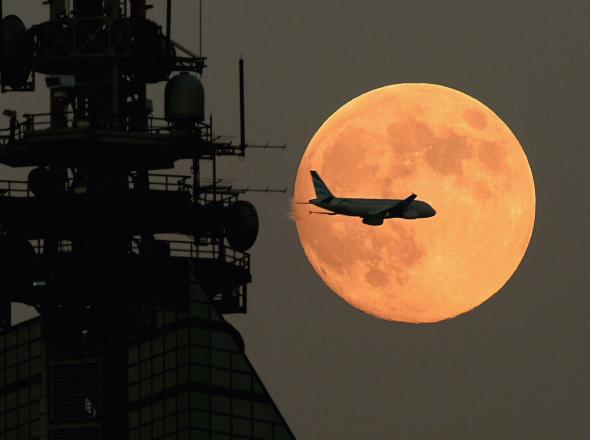See a Spooky Harvest Moon Eclipse, the Last Until 2024

Gaze at the harvest moon on September 16, and you may notice the normally bright lunar orb start to darken. Don’t panic—the ominous sight is a perfectly normal penumbral eclipse. This month’s full moon has been dubbed the harvest moon because it is the closest one to the autumn equinox in the Northern Hemisphere. Rising about half an hour later each night, the added light from the full moon’s shine is said to have given farmers more time to harvest their crops. Last year, the harvest moon was also a supermoon—when our natural satellite made its closest approach to Earth—and it was turned a spectacular ruddy hue by a total lunar eclipse. This year, Earth’s shadow will again darken the moon but in a more ethereal event known as a penumbral eclipse. A total eclipse of the moon is highly dramatic affair, since the moon turns dark red as it glides through the deep inner shadow cone, or umbra, of Earth. Because the sun is a large disk rather than a single point of light, our planet’s shadow also has a lighter outer cone, or prenumbra, that can also envelop the moon. When this penumbral eclipse happens, it creates a subtle shading of the lunar disk. The best views of this week’s harvest eclipse should be across Europe, Africa, Asia, Australia, and the western Pacific basin. The deepest and darkest phase of the eclipse will come at 2:54 p.m. ET (18:54 GMT). Because the darkening will be so slight, the best bet for viewers will be to use binoculars or telescopes to catch the creep of Earth’s shadow as it blankets the moon’s usual glare. Expect to see the darkening effect start over the northern portion of the moon’s limb and envelope about 91 percent of its disk during its maximum phase.
Read More: http://news.nationalgeographic.com/2016/09/how-see-harvest-moon-eclipse-earth-sun-space-astronomy/

